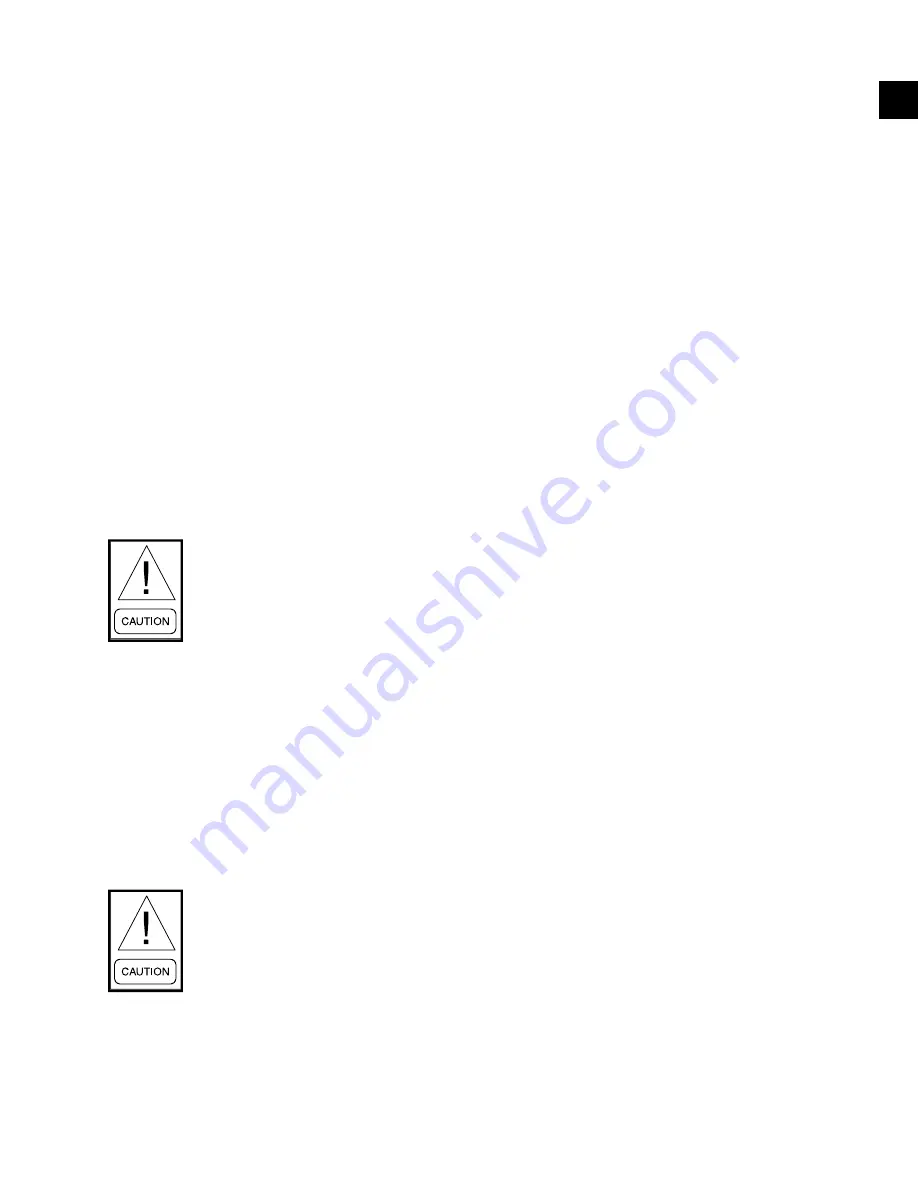
JOHNSON CONTROLS
31
SECTION 1 – INSTALLATION
FORM 160.81-NOM1
ISSUE DATE: 10/3/2020
1
EVAPORATOR AND CONDENSER WATER
PIPING
YR chillers have evaporator and condenser liquid
heads with nozzles that are grooved for the use of
victaulic couplings. The nozzles are also suitable for
welding Class 150 PSIG (1034 kPa) flanges.
The nozzles and water pass arrangements are furnished
in accordance with the job requirements (see Product
Drawing, Form 160.81-PA1). Standard units are de-
signed for 150 PSIG (1034 kPa) DWP on the water
side. If job requirements are for greater than 150 PSIG
(1034 kPa) DWP, check the unit data plate to deter-
mine if the unit has provisions for the required DWP
before applying pressure to evaporator or condenser.
Foreign objects which could lodge in, or block flow
through, the evaporator and condenser tubes must be
kept out of the water circuit. All water piping must be
cleaned or flushed before being connected to the unit,
pumps, or other equipment.
Permanent strainers (by others) are required in both the
evaporator and condenser water circuits to protect the
unit as well as the pumps, tower spray nozzles, chilled
water coils and controls, etc. (The strainer, should be
installed in the entering chilled water line, directly up-
stream of the unit.)
Water piping circuits should be arranged so that the
pumps discharge through the unit. The circuits should
be controlled as necessary to maintain essentially con-
stant chilled and condenser water flows through the
unit at all load conditions.
If pumps discharge through the unit, the strainer may
be located upstream from the pumps to protect both
pump and unit. (Piping between the strainer, pump and
unit must be very carefully cleaned before start-up.) If
pumps are remotely installed from the unit, strainers
should be located directly upstream.
The coolant temperature inside any JCI-supplied liq-
uid-cooled motor starter must be maintained above the
dewpoint temperature in the equipment room to pre-
vent condensing water vapor inside the starter cabinet.
Therefore, an additional temperature-controlled throttle
valve is needed in the flow path for the starter heat ex-
changer to regulate cooling above the equipment room
dewpoint for applications using cooling sources other
than evaporative air-exchange methods, such as wells,
bodies of water, and chilled water. The temperature
control valve should be the type to open on increasing
PIPING CONNECTIONS
After the unit is leveled (and wedged in place for op-
tional spring isolators) the piping connections may be
fabricated; chilled water, condenser water and refriger-
ant relief. The piping should be arranged with offsets
for flexibility, and adequately supported and braced in-
dependently of the unit to avoid strain on the unit and
vibration transmission. Hangers must allow for align-
ment of pipe. Isolators (by others) in the piping and
hangers are highly desirable, and may be required by
specifications. This is done to effectively utilize the vi-
bration isolation characteristics of the isolator mounts
on the unit.
CHECK FOR PIPING ALIGNMENT
When piping is complete, check for alignment. Try
opening a connection in each line, as close to the unit
as possible, by removing the flange bolts or coupling.
If any of the bolts are bound in their holes, or if the
connection springs are out of alignment, the misalign-
ment must be corrected by properly supporting the pip-
ing or by applying heat to anneal the pipe.
It may be necessary to weld chilled water or
condenser water piping directly to the water
pipe nozzles. Since chilled and condenser
water temperature sensor wells are often in
close proximity to these connection points,
sensors in the wells may often see tempera-
tures of several hundred degrees. We have
reason to believe that some potential exists
for damaging these sensors from the trans-
ferred heat. Any damage will most likely
show up as error in the sensor.
It is advisable to remove the sensors from
the wells during the welding process as a
precautionary measure. If the sensor is
removed, assure that it bottoms out when it
is placed back in the well.
If the piping is annealed to relieve stress,
the inside of the pipe must be cleaned of
scale before it is finally bolted in place.






























